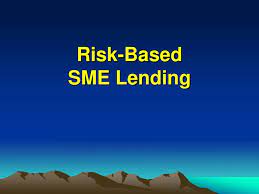Small and medium enterprises face a number of challenges and constraints; every lender must consider them before extending credit to them. The following are some of the challenges and constraints that face SME:
- Demand Fluctuations
SMEs are affected by cyclical fluctuations in demand which may negatively affect the bottom-line of the business. They face stiff competition and operate in limited market space which may curtail their ability to increase revenues in case of demand challenges in the market of operation.
- Economies of Scales
Small firms may not have an advantage of economies of scale that is usually available to big organisations. Their costs of production are high as compared to those of big firms making it hard for them to compete on the basis of better prices.
- Management challenges
Most SME’s are operated by the owners who make all decisions and some lack the required managerial skills to run the business which may lead to business failure.
- Financial Challenges
Cash flow challenges are common with SME’s due to limited sources of finance and lack of skills in management of accounts receivables.
Other than the above challenges below are risks associated with lending to SME:
- Customer Risks
Due to capacity challenges SME’s depends on a few customers and if a key customer experiences financial constraints and are unable to pay debts to the SME, this could mean a cash flow problem for the SME.
- Supplier Risk
Due to dependence on a few suppliers, production, profits and cash flow could be negatively affected if a supplier failed to supply the required items for whatever reasons.
- Staff Risk
Most SME’s have a challenge of staff capacity and the owner of the business is usually the key person. In case the owner of the business becomes incapacitated the business is negatively affected. Staff dealing with suppliers and customers exclusively may eventually leave or partner with them and this may affect the business negatively.
- Location Risk
SME’s heavily depend on location and a relocation of the business could have a negative impact on the business. A new location could pose new risks that may affect performance of the business.
- Reputation Risks
Reputational damage may result from delivery of poor services or goods or failure to deliver on time may lead to reputation risk negatively impacting on the business.
- Information Technology Risk
Technology possess a number of risks to a business in terms of lack of IT staff supporting the operations of the business in case of break down.
- Financial Risk
They are risks associated with the ability to honour obligations on time, collection of accounts receivable and costs of finance related to borrowing from banks.
- Market Risks
Risk tolerance for small business is low compared to big firms in the event of economic downturn. During recession most SME are severely affected to an extend of being unable to revamp back.
- Compliance Risk
Involves lack of legal documentation and licenses required to run the business which may be a hindrance in getting new business.
- Lack of capital
Lack of capital is a big hindrance to most SME’s when there is need for finances to expand the business. Mostly sources of finance available for SME’s are expensive and short-term.
- Lack of track Record
Keeping records enables a business to create a history which most lenders will require before lending to a business. Cash flow prediction by a lender can only be done when business records are up to date.
For more information on courses offered at Tumaini Institute call us on 0704-147682 or visit us in Nairobi at coffee Plaza 6th Floor.


Insightful
Specialization is also a challenge to them as they diversify within a very short time after market entry having not stabilised.
SMEs are affected by cyclical fluctuations in demand which may negatively affect the bottom-line of the business.